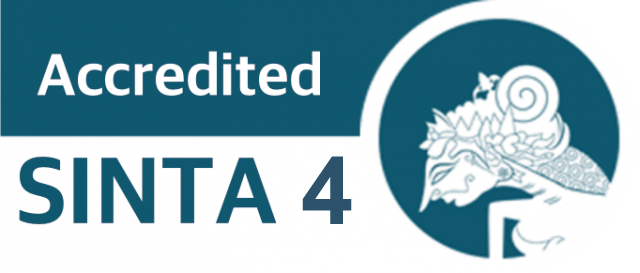The Effect of Mangrove Crab Shell Powder (Scylla serrata) Addition on the Iron Content of Cookies
DOI:
10.29303/jpm.v20i6.9528Published:
2025-10-08Issue:
Vol. 20 No. 6 (2025)Keywords:
Cookies; Iron Content; Mangrove Crab Shell PowderArticles
Downloads
How to Cite
Downloads
Metrics
Abstract
Increased awareness of healthy lifestyles has spurred the growth of functional food trends among communities. Iron deficiency causes anemia, a major nutritional problem in Indonesia. Mangrove crab shells are a local source of iron. In most cases, the edible portion of crabs is limited to the meat, while the shells are discarded, leading to their high potential as a source of waste. The purpose of this study was to determine the effect of adding mangrove crab shell powder on the iron content of cookies. This study employed an experimental design using a Complete Randomized Design (CRD), with treatments of adding different concentrations of mangrove crab shell powder (0%, 3%, 6%, 9%, 12%, 15%). The data were analyzed using ANOVA and Duncan’s multiple range test. Findings indicated that adding mangrove crab shell powder significantly affected the iron content of the cookies. The iron content of the modified cookies ranged from 64.13 to 187.54 mg. The higher the concentration of crab shell flour added, the higher the iron content of the cookies. It is recommended that further research be conducted, encompassing organoleptic evaluation, microbiological contamination analysis, and heavy metal contamination assessment, to ensure the product's safety and quality. It is hoped that this research can serve as a reference on the use of crab shell waste as a source of iron that is beneficial to health.
References
T. K. Khoerunnisa, “Review: Pengembangan produk pangan fungsional di Indonesia berbasis bahan pangan lokal unggulan,” Indonesian Journal of Agricultural and Food Research, pp. 49–59, 2020. Retrived from: https://journal.uniga.ac.id/index.php/IJAFOR/article/view/1149
S. C. E. Setiawan, A. Yuliantara, and P. D. B. Murti, “Pangan fungsional dari bahan pangan tradisional: Tinjauan pustaka,” Agrointek, vol. 18, no. 4, pp. 552–560, 2024. doi: https://doi.org/10.21107/agrointek.v18i3.15464
R. N. Amalia, A. Rahmiwati, N. A. Fajar, and N. Sari, “Preferensi pangan fungsional dan implikasinya,” SAGO: Gizi dan Kesehatan, vol. 5, no. 2, pp. doi:456–465, 2024.
Kementerian Kesehatan RI, Survey kesehatan Indonesia dalam angka. Jakarta, Indonesia: Kementerian Kesehatan Republik Indonesia, 2023.
I. Kurniati, “Anemia defisiensi zat besi (Fe),” JK Unila, vol. 4, no. 1, pp. 18–33, 2020. doi: 10.23960/jkunila.v4i1.pp18-33
L. C. Friday, M. Hakimi, and B. I. Kandarina, “Pemberian makanan tambahan olahan ikan untuk ibu hamil trimester III sebagai upaya menurunkan volume darah yang hilang selama persalinan di Kota Yogyakarta,” Jurnal Ilmu Gizi Indonesia, vol.4, no.1, pp. 59–74,2020. doi:10.35842/ilgi.v4i1.171
M. N. Azra and M. Ikhwanuddin, “A review of maturation diets for mud crab genus Scylla broodstock: Present research, problems and future perspective,” Saudi Journal of Biological Sciences, vol. 23, no. 2, pp. 257–267, 2016. doi: org/10.1016/j.sjbs.2015.03.011
R. Djamaluddin, Mangrove: Biologi, ekologi, rehabilitasi, dan konservasi. Manado, Indonesia: Unsrat Press, 2018.
Y. Koniyo, Teknologi budidaya kepiting bakau (Scylla serrata forsskal) melalui optimalisasi lingkungan dan pakan. Gorontalo, Indonesia: CV. AA Rizky, 2020.
A. Hubatsch, S. Y. Lee, J.-O. Meynecke, K. Diele, I. Nordhaus, and M. Wolff, “Life-history, movement, and habitat use of Scylla serrata (Decapoda, Portunidae): Current knowledge and future challenges,” Hydrobiologia, vol. 763, pp. 5–21, 2016. doi: 10.1007/s10750-015-2393-z
J. R. Ningsih and E. Kurniawan, “Pembuatan karbonat apatit dari bahan dasar cangkang kepiting,” Inovasi Teknik Kimia, vol. 8, no. 2, pp. 133–138, 2023. doi: doi.org/10.31942/inteka.v8i2.8125
A. A. Ahmed, “Mineral and amino profile of crab (Sudanonaonautes aubryi),” Journal Food Chemistry Advances, vol. 1, 2022, doi: 10.1016/j.focha.2022.100070.
I. A. P. A. Widnyani and A. A. N. D. A. W. Putra, “Formulation, fortification of mangrove crab shell flour (Scylla serrata) as a mineral source in functional cookies,” Jurnal Pijar MIPA, vol. 19, no. 6, pp. 1037–1040, 2024. doi: 10.29303/jpm.v19i6.7931
M. R. Annafiz, E. N. Dewi, and L. Purnamayati, “The effect of addition swimming crab shells flour (Portunus pelagicus) for physical and chemical quality of edible spoon,” Indonesian Journal of Fisheries Science and Technology, vol. 16, no. 3, pp. 165–170, 2020. doi: 10.14710/ijfst.16.3.165-170
D. S. Manalu, G. K. Nugrahaini, and N. U. Padoma, “Value added processing mushrooms flour into cookies at CV Assalam Cianjur with Business Model Canvas (BMC) approach,” Jurnal Agribisnis, vol. 1, no. 2, pp. 1–13, 2023. doi: 10.33830/Agridev.v1i2.3719.2023
Badan Pusat Statistik Indonesia, Rata-rata konsumsi perkapita seminggu menurut kelompok makanan dan minuman jadi per kabupaten/kota. Jakarta, Indonesia: BPS, 2024.
United States Department of Agriculture [USDA], Cookies, shortbread, commercially prepared, plain. USDA National Nutrient, 2019.
M. T. Hapsoro, E. N. Dewi, and U. Amalia, “Pengaruh penambahan tepung cangkang rajungan (Portunus pelagicus) dalam pembuatan cookies kaya kalsium,” Jurnal Pengolahan dan Bioteknologi Hasil Perikanan, vol. 6, no. 3, pp. 20–27, 2017. Retrieved from: https://ejournal3.undip.ac.id/index.php/jpbhp/article/view/20293
AOAC, Official methods of analysis of the Association of Analytical Chemist, 18th ed. Washington DC, USA: Association of Official Analytical Chemists, 2005.
Kementerian Kesehatan RI, Tabel komposisi pangan Indonesia (TKPI). Jakarta, Indonesia: Kementerian Kesehatan Republik Indonesia, 2020.
M. Z. Mamun, T. Haque, M. S. Ahmed, M. A. Satter, M. Begum, M. S. Hossen, and M. S. Rana, “Nutritional evaluation of edible swimming crabs Portunus pelagicus (Linnaeus, 1758) and Portunus sanguinolentus (Herbst, 1783) from coastal area of Bangladesh,” Journal of Agriculture and Food Research, vol. 15, no. 100972, pp. 1–6, 2024. doi: https://doi.org/10.1016/j.jafr.2024.100972
D. A. Nafies, “Analisis kandungan zat besi, protein dan mutu organoleptik cookies substitusi tepung ikan manyung dan tepung bayam hijau sebagai selingan remaja anemia,” INSOLOGI: Jurnal Sains dan Teknologi, vol. 3, no. 6, pp. 588–597, 2024. doi: https://doi.org/10.55123/insologi.v3i6.4165
S. Rauf and Mustamin, “Analisis kandungan zat besi cookies substitusi tepung jewawut dan tepung ikan teri dalam mengatasi masalah anemia gizi besi,” Media Gizi Pangan, vol. 27, no. 1, pp. 123–130, 2020.
A. Lolo, C. F. Patandean, and E. Ruslan, “Karakterisasi air daerah panas bumi Pencong dengan metode AAS (Atomic Absorption Spectrophotometer) di Kecamatan Biringbulu, Kabupaten Gowa, Provinsi Sulawesi Selatan,” Jurnal Geocelebes, vol. 4, no. 2, pp. 102–110, 2020. doi: https://doi.org/10.20956/geocelebes.v4i2.8928
Badan Standarisasi Nasional, Tepung terigu (SNI 3751-2018). Jakarta, Indonesia: BSN, 2018.
Y. Sogen and G. Oematan, “Analisis kandungan zat besi sayur kangkung pada beberapa rantai produksi,” Jurnal Pangan, Gizi, dan Kesehatan, vol. 1, no. 2, pp. 39–44, 2009. doi: https://doi.org/10.51556/ejpazih.v1i2.34
M. Aprianto, Buku ajar: Kimia pangan. Yogyakarta, Indonesia: Nuta Media, 2021.
F. Muchtar and D. S. Effendy, “Penilaian asupan zat besi remaja putri di Desa Mekar Kecamatan Soropia Kabupaten Konawe,” Jurnal GEMBIRA (Pengabdian Kepada Masyarakat), vol. 1, no. 1, pp. 172–179, 2023.Retrifed from: https://gembirapkm.my.id/index.php/jurnal/article/view/29
S. N. Fitria and G. N. Prameswari, “Analisis kandungan zat gizi dan daya terima cookies tepung lentil (Lens culinaris) sebagai PMT ibu hamil,” Indonesian Journal of Public Health and Nutrition, vol. 2, no. 1, pp. 122–131, 2022. doi: 10.30867/gikes.v5i1.1309
Kementerian Kesehatan RI, Angka kecukupan gizi yang dianjurkan (Permenkes RI No. 28 Tahun 2019). Jakarta, Indonesia: Kementerian Kesehatan Republik Indonesia, 2019
I. Nafsiah, S. Rizal, D. Koesoemawardani and S. Suharyo, “Karakteristik Senosiru dan Kimia Tortila Chips Dengan Penambahan Tepung Cangkang Rajungan (Portus pelagicus)”, Jurnal Agroindustri Berkelanjutan vol 1, no 2. 2022. doi: https://doi.org/10.23960/jab.v1i2.6387
A.N. Latifah, Rochima, I.R. Pratama, and Rostini. “Analisis Tingkat Kesukaam Snack Bar Dengan Penambahan Tepung Cangkang Rajungan”, Jurnal Perikanan Unram, vol 15, no 3 pp. 1267-1280. 2025. doi: 10.29303/jp.v15i3.1525
Author Biographies
Ni Kadek Ayu Rina Anggraeni, Department of Food Technology, Institute of Technology and Health Bali
Ida Ayu Putu Ary Widnyani, Department of Food Technology, Institute of Technology and Health Bali
I Gusti Agung Yogi Rabani RS, Department of Food Technology, Institute of Technology and Health Bali
Putu Rima Sintyadewi, Department of Food Technology, Institute of Technology and Health Bali
Anak Agung Ngurah Dwi Ariesta Wijaya Putra, Department of Food Technology, Institute of Technology and Health Bali
License
Copyright (c) 2025 Ni Kadek Ayu Rina Anggraeni; Ida Ayu Putu Ary Widnyani, I Gusti Agung Yogi Rabani RS, Putu Rima Sintyadewi, Anak Agung Ngurah Dwi Ariesta Wijaya Putra

This work is licensed under a Creative Commons Attribution 4.0 International License.
The following terms apply to authors who publish in this journal:
1. Authors retain copyright and grant the journal first publication rights, with the work simultaneously licensed under a Creative Commons Attribution License 4.0 International License (CC-BY License) that allows others to share the work with an acknowledgment of the work's authorship and first publication in this journal.
2. Authors may enter into separate, additional contractual arrangements for the non-exclusive distribution of the journal's published version of the work (e.g., posting it to an institutional repository or publishing it in a book), acknowledging its initial publication in this journal.
3. Before and during the submission process, authors are permitted and encouraged to post their work online (e.g., in institutional repositories or on their website), as this can lead to productive exchanges as well as earlier and greater citation of published work (See The Effect of Open Access).











